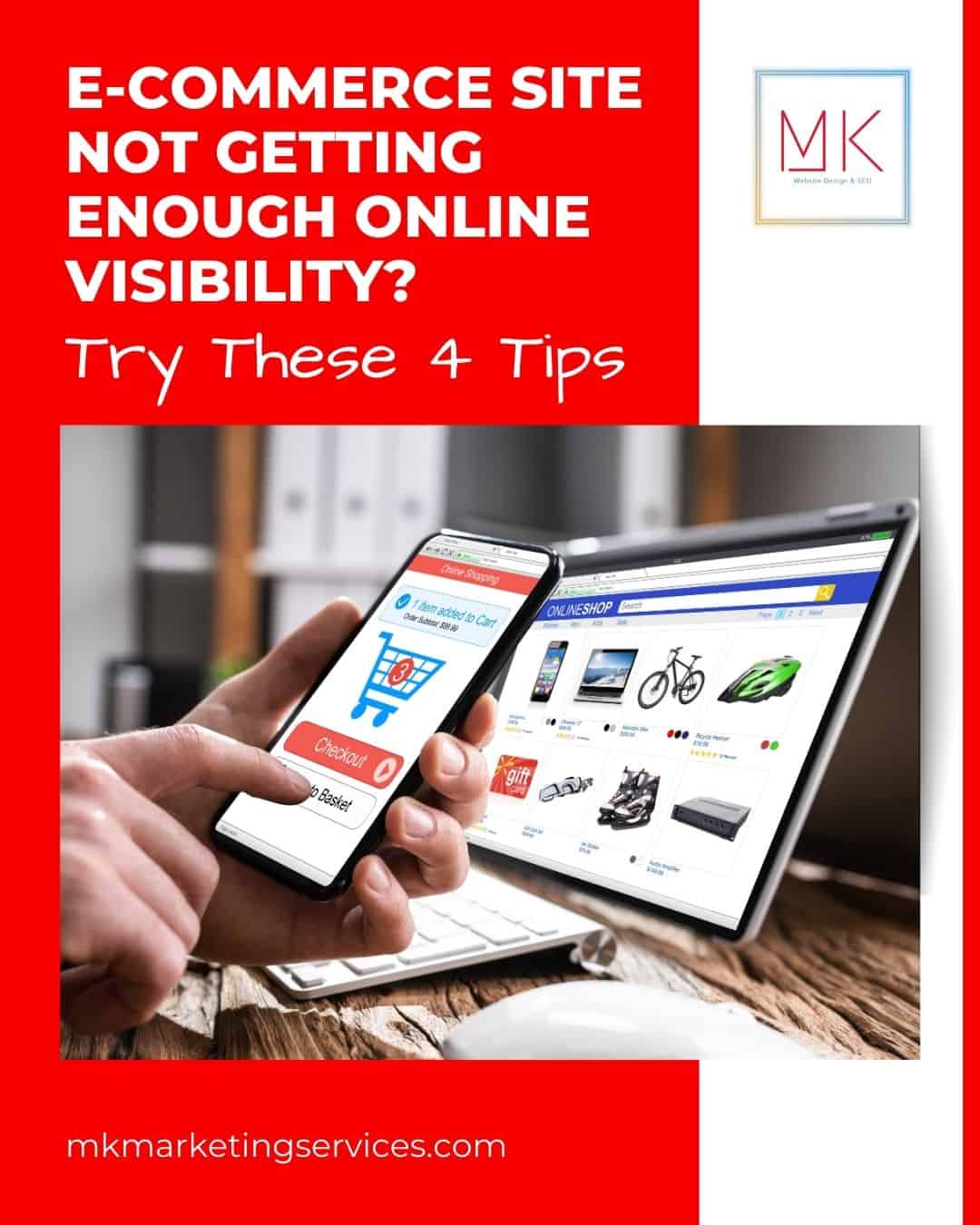E-Commerce Site Not Getting Enough Online Visibility? Try These 4 Tips
It’s a jungle out there – in terms of competition for attracting your target customers, that is. E-commerce has exploded, and consumers have never had so many choices when the search for products or services.
So, how do you stand out among your competition? How do you get the visibility you need to grow your business? Because, as you know, nothing happens until people first find you.
Here are four Strategies that You Should Begin Using Now.
- Pick Social Media Platforms Carefully
There is a big temptation to try to spread yourself all over social media, hoping to capture the attention of some who may be interested in your product(s).
First, this is not the purpose of social media. You are not trying to sell anything. You are trying to establish connections and relationships, tell your brand’s story, and engage your audiences through entertainment and/or inspiration. You can use social media to drive followers to your site, by offering teasers to other great information, and even discounts and specials, but most of what you post should be informative, entertaining, or inspirational.
Rather than hit all platforms, hoping that some of what you post “sticks” with the right audience, do the research and find out where your audience most hangs out. There is a lot of information out there about what demographics use which platforms when they are most often on those platforms. Choose only a couple of platforms and stick with those. It takes a lot of effort to keep up even two social media platforms. If you don’t do it well, and post often, you will not grow your following.
- Start a Blog
Your blog is where you do several things.
- You establish yourself as an expert in your niche. You write content that gives good information to users, that addresses their pain points and solves problems that they have.
- The content you create must be well-written and engaging. If you sell gardening supplies, then speak to the type of plants that are best for various climates, to natural fertilizers, to the best choices for sunny and shady areas, etc. You are not selling anything with your blog – you are providing value.
- If you struggle with content, then get some help. Visuals are critical; engaging writing that informs and entertains is vital. You can use any number of tools to help: a writing service, such as Trust My Paper, which has a department of copywriting experts, can take any topic and turn it into a compelling piece; consider creating how-to videos, and use any one of many video editing tools to make them entertaining.
- Solicit user-generated content. Ask happy customers for photos or videos of them with your product(s). Publish these on your blog and on your social media platforms.
- Add internal links from your blog posts to other pages of your blog – and to other pages on your site in which specific products may be featured that solve problems for your readers
- SEO
You must be visible when consumers conduct generic searches. There are several things that search engine algorithms look for as they crawl through websites and blogs. They want to see rich content; they want to see backlinks to that content from reputable outside sources; they look for keywords (especially long-tail keyword phrases) that are most popular in searches related to your niche.
- The rich content should be taken care of, if you have used the right sources, know your audience and what they want and need, and have created engaging posts that are shared.
- There are many sources where you can find the most popular keywords and keyword phrases for your niche – some free, some fee-based. You can also do your own search with keywords for your niche and see what pops up. Check out your competition as well. Since most consumers now search with phrases, look to using them rather than single keywords.
- You want to get backlinks to your site and blog from related, reputable sources. You can begin to do this by establishing relationships with related businesses, linking to one another collaboratively. If you sell gardening tools, then collaborate with landscapers, nurseries, etc. When search engines see these types of backlinks, they rank you higher.
- Make sure you have a sitemap, that your site and all pages load quickly, and that you are fully responsive for mobile devices.
- Leverage Social Media
Choosing one or two of the right platforms has already been covered. You can use those chosen platforms to do several things:
- Tell your story and the stories of your staff and customers, with lots of visuals – people love stories and come to trust you as a real person.
- Offer coupons and discounts
- Offer freebies/discounts for sharing your posts
- Get a theme that keeps followers coming back for more. You can have a joke of the day or a “Freaky Friday” post that followers can look forward to and will be motivated to share.
The goal is to grow a following for your brand based on your ability to be social and to provide entertainment and offers. Social media is called “social” for a reason – it is your opportunity to establish connections and relationships.
In the End…
Until people find you, you cannot hope to build your business. If you seriously follow these four strategies, you will gain the visibility you need, even though your competition may be tough. You can be tougher.
Article Bio: Diana Nadim is a writer and editor who has a Master degree in Marketing. She combines her passion for writing with her interest in research and creates thought-provoking content in various fields. Besides working as a regular writer for SupremeDissertations, Diana also runs her own 3to5Marketing blog. What inspires her the most in her writing is traveling and meeting new people. Follow her on Twitter.













